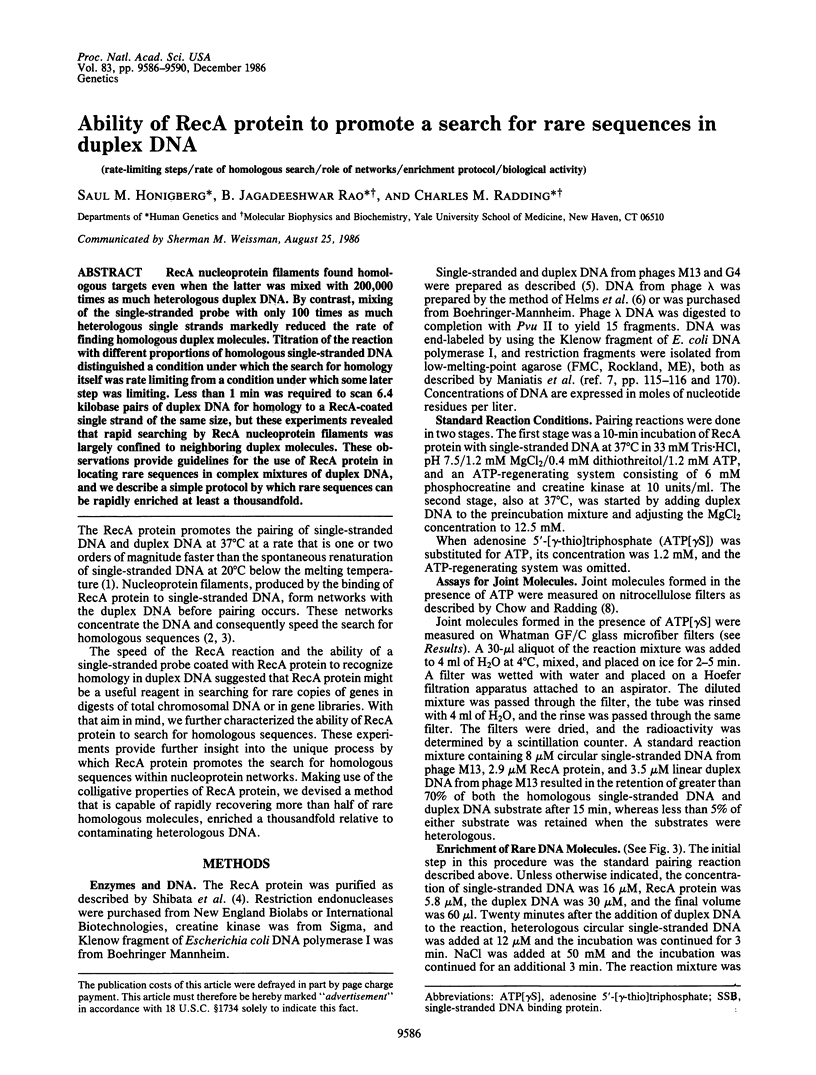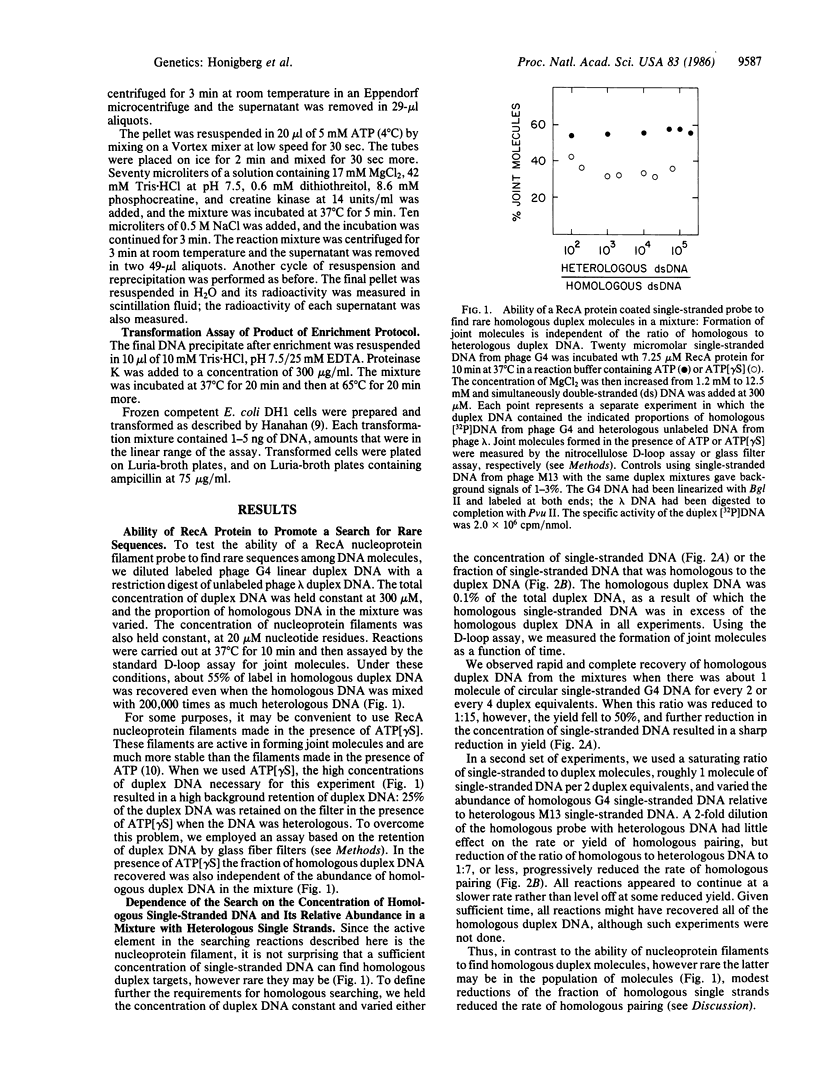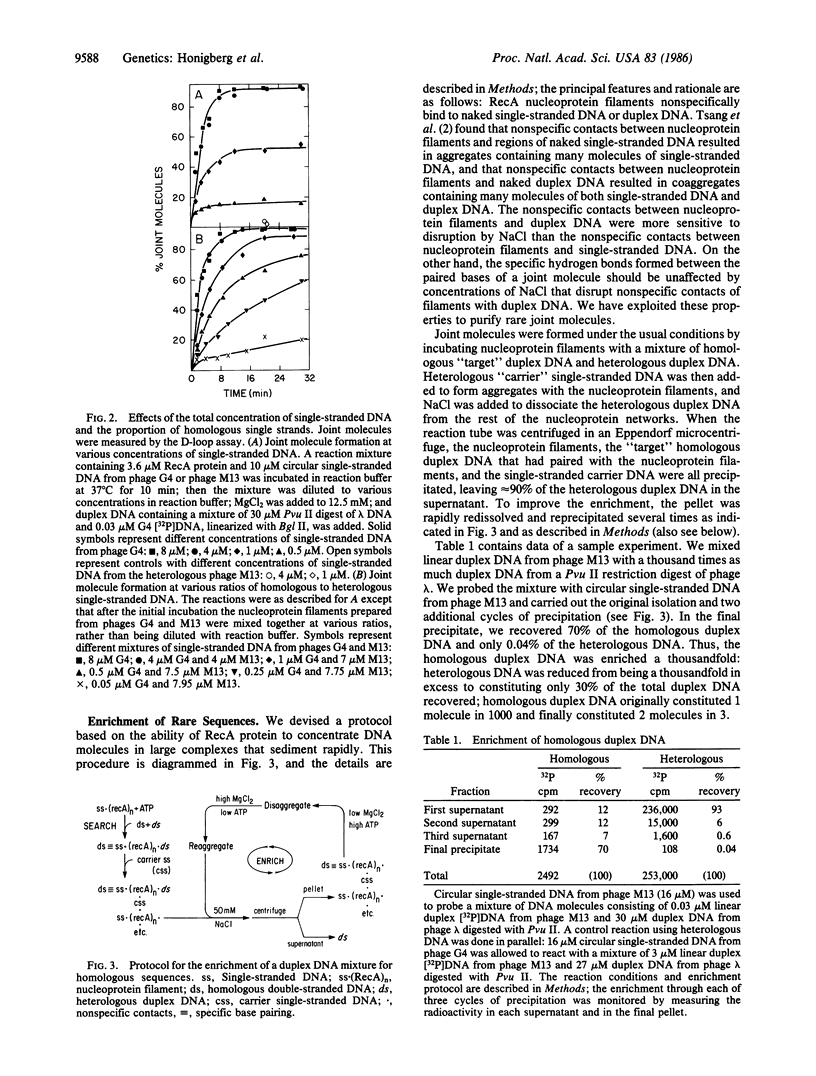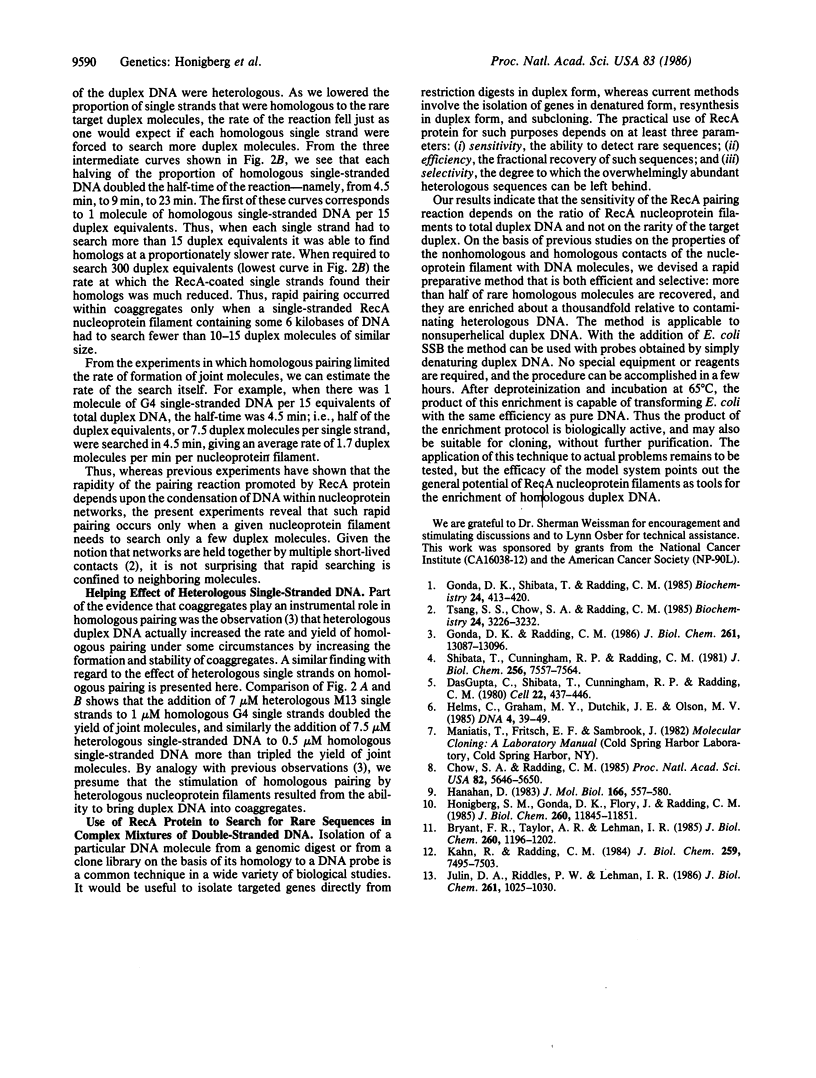Abstract
RecA nucleoprotein filaments found homologous targets even when the latter was mixed with 200,000 times as much heterologous duplex DNA. By contrast, mixing of the single-stranded probe with only 100 times as much heterologous single strands markedly reduced the rate of finding homologous duplex molecules. Titration of the reaction with different proportions of homologous single-stranded DNA distinguished a condition under which the search for homology itself was rate limiting from a condition under which some later step was limiting. Less than 1 min was required to scan 6.4 kilobase pairs of duplex DNA for homology to a RecA-coated single strand of the same size, but these experiments revealed that rapid searching by RecA nucleoprotein filaments was largely confined to neighboring duplex molecules. These observations provide guidelines for the use of RecA protein in locating rare sequences in complex mixtures of duplex DNA, and we describe a simple protocol by which rare sequences can be rapidly enriched at least a thousandfold.
Full text
PDF




Selected References
These references are in PubMed. This may not be the complete list of references from this article.
- Bryant F. R., Taylor A. R., Lehman I. R. Interaction of the recA protein of Escherichia coli with single-stranded DNA. J Biol Chem. 1985 Jan 25;260(2):1196–1202. [PubMed] [Google Scholar]
- Chow S. A., Radding C. M. Ionic inhibition of formation of RecA nucleoprotein networks blocks homologous pairing. Proc Natl Acad Sci U S A. 1985 Sep;82(17):5646–5650. doi: 10.1073/pnas.82.17.5646. [DOI] [PMC free article] [PubMed] [Google Scholar]
- DasGupta C., Shibata T., Cunningham R. P., Radding C. M. The topology of homologous pairing promoted by RecA protein. Cell. 1980 Nov;22(2 Pt 2):437–446. doi: 10.1016/0092-8674(80)90354-2. [DOI] [PubMed] [Google Scholar]
- Gonda D. K., Radding C. M. The mechanism of the search for homology promoted by recA protein. Facilitated diffusion within nucleoprotein networks. J Biol Chem. 1986 Oct 5;261(28):13087–13096. [PubMed] [Google Scholar]
- Gonda D. K., Shibata T., Radding C. M. Kinetics of homologous pairing promoted by RecA protein: effects of ends and internal sites in DNA. Biochemistry. 1985 Jan 15;24(2):413–420. doi: 10.1021/bi00323a026. [DOI] [PubMed] [Google Scholar]
- Hanahan D. Studies on transformation of Escherichia coli with plasmids. J Mol Biol. 1983 Jun 5;166(4):557–580. doi: 10.1016/s0022-2836(83)80284-8. [DOI] [PubMed] [Google Scholar]
- Helms C., Graham M. Y., Dutchik J. E., Olson M. V. A new method for purifying lambda DNA from phage lysates. DNA. 1985 Feb;4(1):39–49. doi: 10.1089/dna.1985.4.39. [DOI] [PubMed] [Google Scholar]
- Honigberg S. M., Gonda D. K., Flory J., Radding C. M. The pairing activity of stable nucleoprotein filaments made from recA protein, single-stranded DNA, and adenosine 5'-(gamma-thio)triphosphate. J Biol Chem. 1985 Sep 25;260(21):11845–11851. [PubMed] [Google Scholar]
- Julin D. A., Riddles P. W., Lehman I. R. On the mechanism of pairing of single- and double-stranded DNA molecules by the recA and single-stranded DNA-binding proteins of Escherichia coli. J Biol Chem. 1986 Jan 25;261(3):1025–1030. [PubMed] [Google Scholar]
- Kahn R., Radding C. M. Separation of the presynaptic and synaptic phases of homologous pairing promoted by recA protein. J Biol Chem. 1984 Jun 25;259(12):7495–7503. [PubMed] [Google Scholar]
- Shibata T., Cunningham R. P., Radding C. M. Homologous pairing in genetic recombination. Purification and characterization of Escherichia coli recA protein. J Biol Chem. 1981 Jul 25;256(14):7557–7564. [PubMed] [Google Scholar]
- Tsang S. S., Chow S. A., Radding C. M. Networks of DNA and RecA protein are intermediates in homologous pairing. Biochemistry. 1985 Jun 18;24(13):3226–3232. doi: 10.1021/bi00334a023. [DOI] [PubMed] [Google Scholar]


